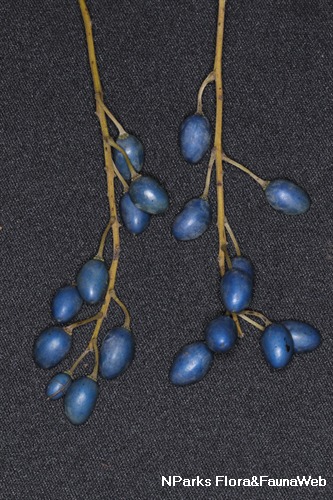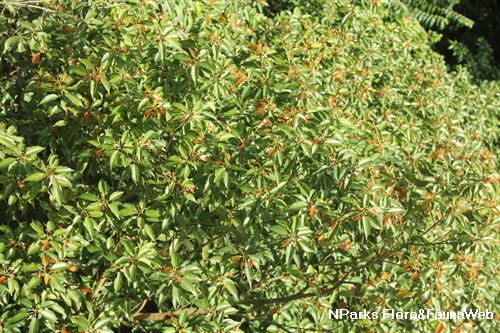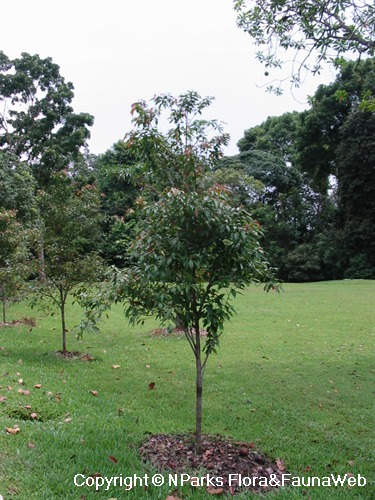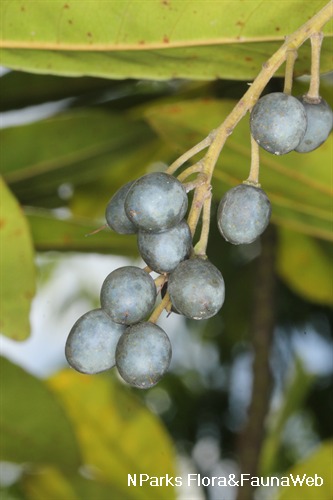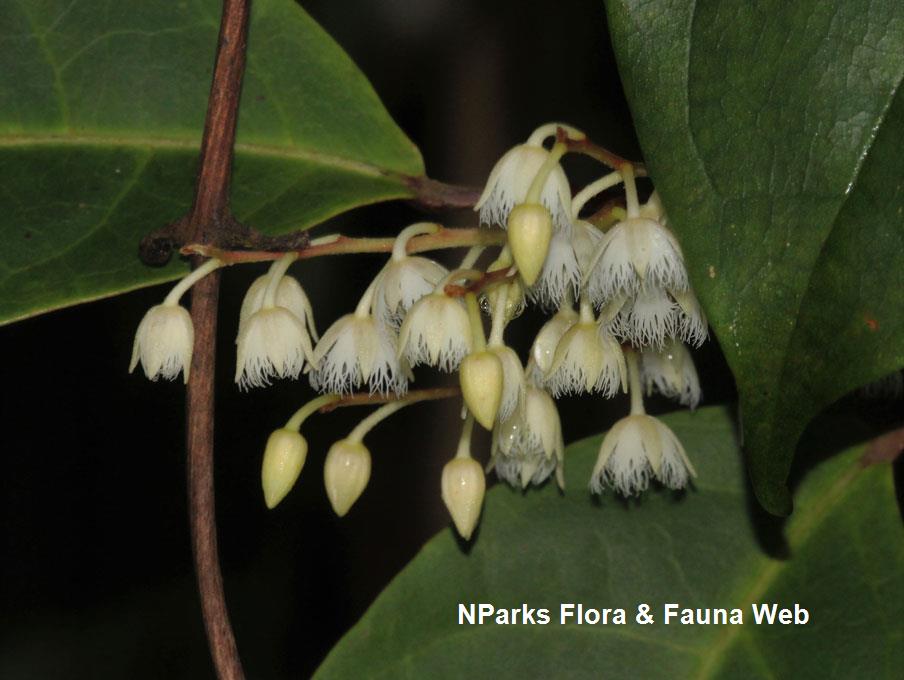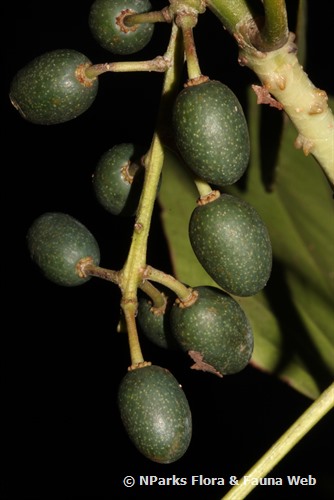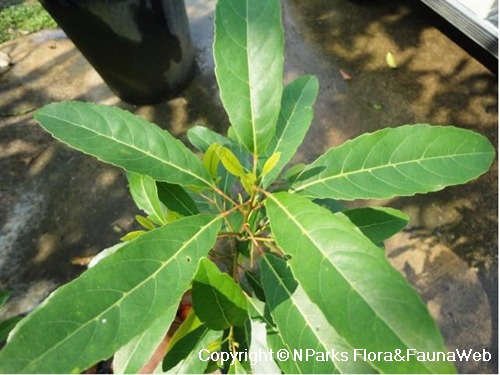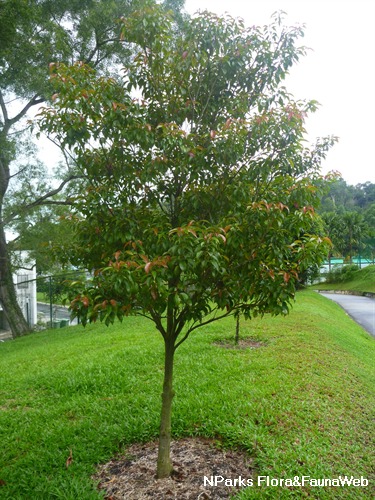
Back
Elaeocarpus mastersii King
| Family Name: | Elaeocarpaceae |
| Common Name: | Small-leaved Oil-fruit, Cemantung Merah, Lempedu Burung, Medang Asam, 杜英 |
Name
Classifications and Characteristics
| Plant Division | Angiosperms (Flowering Seed Plants) (Dicotyledon) |
|---|---|
| Plant Growth Form | Tree (Medium (16m-30m)) |
| Lifespan (in Singapore) | Perennial |
| Mode of Nutrition | Autotrophic |
| Plant Shape | Tiered, Irregular |
| Maximum Height | 20 m |
Biogeography
| Native Distribution | From Sumatra, through Peninsular Malaysia, and Singapore to Borneo |
|---|---|
| Native Habitat | Terrestrial (Primary Rainforest, Mountain, Secondary Rainforest, Freshwater Swamp Forest, Riverine) |
| Preferred Climate Zone | Tropical |
| Local Conservation Status | Native to Singapore (Least Concern (LC)) |
Description and Ethnobotany
| Growth Form | It is a tree up to 20 m tall. |
|---|---|
| Foliage | Its spirally arranged, stalked leaves have leathery leaf blades that are toothed, oblong-lance-shaped, tipped, dark green, turning red when withering, and 4.3–14 by 1.3–5 cm. |
| Flowers | Its tiny flowers are creamy-white or greenish and about 2.5–4 by 0.4–0.5 cm. They are found on 0.7–5.1 cm long flowering shoots at the leaf axils. |
| Fruit | Its greyish-blue fruits are drupes, round-oval, and up to 1.5 by 0.8 cm. |
| Habitat | It grows in primary and secondary lowland to montane forests, including freshwater and peat swamps, up to 2,000 m altitude. It occurs locally in Bukit Timah Nature Reserve and Central Catchment Nature Reserve. |
| Associated Fauna | Its fruits and seeds are eaten and dispersed by birds. |
| Cultivation | It is propagated by seed and stem cuttings. |
| Etymology | Greek elaion, oil; Greek karpos, fruit, referring to the oily fruit pulp; Latin mastersii commemorating M. T. Masters, a 19th century English botanist |
Landscaping Features
| Landscaping | It is suitable for planting along streetscapes, parks and gardens. |
|---|---|
| Desirable Plant Features | Ornamental Foliage, Ornamental Form |
| Landscape Uses | Suitable for Roadsides, General, Parks & Gardens, Small Gardens, Riverine |
Fauna, Pollination and Dispersal
| Fauna Pollination Dispersal Associated Fauna | Bird-Attracting (Fruits) |
|---|---|
| Pollination Method(s) | Biotic (Fauna) |
| Seed or Spore Dispersal | Biotic (Fauna) |
Plant Care and Propagation
| Light Preference | Full Sun, Semi-Shade |
|---|---|
| Water Preference | Moderate Water |
| Plant Growth Rate | Moderate |
| Rootzone Tolerance | Moist Soils, Well-Drained Soils, Fertile Loamy Soils |
| Propagation Method | Seed |
Foliar
| Foliage Retention | Evergreen |
|---|---|
| Mature Foliage Colour(s) | Green |
| Prominent Young Flush Colour(s) | Red |
| Foliar Type | Simple / Unifoliate |
| Foliar Arrangement Along Stem | Alternate, Spiral |
| Foliar Attachment to Stem | Petiolate |
| Foliar Shape(s) | Non-Palm Foliage (Lanceolate, Oblong) |
| Foliar Venation | Pinnate / Net |
| Foliar Margin | Serrate / Toothed |
| Leaf Area Index (LAI) for Green Plot Ratio | 3.0 (Tree - Intermediate Canopy) |
Floral (Angiosperm)
| Flower & Plant Sexuality | Bisexual Flowers |
| Flower Colour(s) | White, Cream / Off-White |
|---|---|
| Flower Grouping | Cluster / Inflorescence |
| Flower Location | Axillary |
| Flower Symmetry | Radial |
Fruit, Seed and Spore
| Mature Fruit Colour(s) | Silver / Grey, Blue |
|---|---|
| Mature Fruit Texture(s) | Powdery / Waxy Bloom |
| Fruit Classification | Simple Fruit |
| Fruit Type |
Image Repository
Others
| Master ID | 1578 |
|---|---|
| Species ID | 2871 |
| Flora Disclaimer | The information in this website has been compiled from reliable sources, such as reference works on medicinal plants. It is not a substitute for medical advice or treatment and NParks does not purport to provide any medical advice. Readers should always consult his/her physician before using or consuming a plant for medicinal purposes. |

